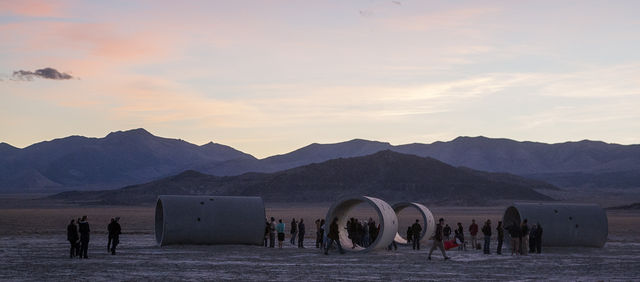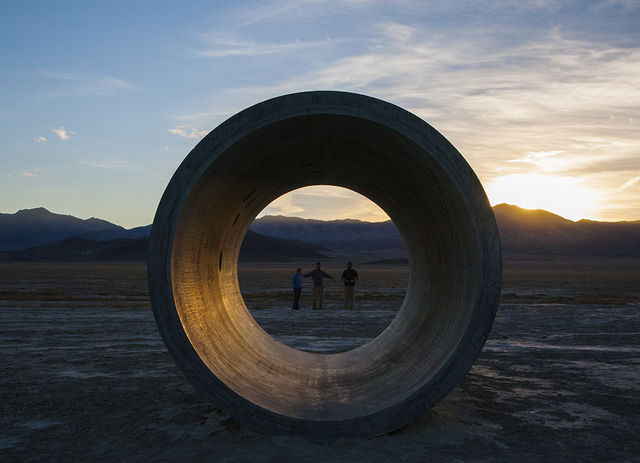Utah is a beautiful place. It’s not unusual to hear newcomers complimenting its unique natural landscapes.
While scenes of our towering mountains and expansive desert plains are impressive, Utah is also dotted with powerful works of land art that augment this natural beauty. For this month’s installation of the program “ARTLandish: Land Art, Landscape, and the Environment,” the Utah Museum of Fine Arts (UMFA) is inviting visitors out to one of these impressive man-made wonders — the Sun Tunnels.

Located in Utah’s Great Basin Desert, this art piece consists of four massive concrete tunnels that react to the sun differently, each one aligning with either the sunrise or sunset, of the summer or winter solstice. The museum’s community meet up is happening on April 30, from 1 to 4 p.m. at the site and is free and open to the public.
Mindy Wilson, director of marketing and public relations at the museum, explained that land art is an artistic genre that emerged in the late ‘60s. The artists behind it were particularly interested in engaging with art outside the sometimes sterile and static atmosphere of museums. The result of this movement has been far reaching and varied. Two of the most important pieces of land art, “Spiral Jetty” by Robert Smithson, and “Sun Tunnels” by Nancy Holt, are located right in our backyard.

While the Spiral Jetty, a man-made rock and earth spiral that juts out into the Great Salt Lake, is more famous, these two installations are deeply connected.
“Spiral Jetty creator Robert Smithson and Nancy Holt, by the way, were married, until Smithson’s untimely death in 1973, around the time Holt started working on Sun Tunnels,” Wilson said.
The event should have something for everyone, regardless of prior experience.
“You don’t have to know anything about land art or about art generally to appreciate the experience of traveling to and spending time at Sun Tunnels,” Wilson explained. “This meet-up is the perfect opportunity for anyone who’s been wanting to see the Sun Tunnels or just explore the desert but didn’t know quite how to make it happen or what to expect. It’ll also be a great time for anyone who’s been there before, because you’ll be meeting and experiencing the Sun Tunnels in the company of fellow adventurers.”
Multiple activities will be made available on April 30, including talks given by curators and scholars from the U and abroad, live music performed by students from the School of Music and informational booths.
Interested parties should come with food, water, appropriate clothing and a full tank of gas to make the most of their experience at the Sun Tunnels. Students should also be aware that cell reception, and thus GPS, will be spotty, but as long as you plan ahead, you should be fine.

Don’t let finals get you down — take advantage of this opportunity to remind yourself that the rest of the world is still moving and classes are not the end-all be-all of life. Make sure to find time to connect to the world around you in between stressful projects.
“In a place like Utah, where the physicality of the place is so monumental, land art is a great tool for making a more personal connection to the landscape and the world in which we live,” Wilson said.
Visit http://umfa.utah.edu/suntunnels_selfguide for travel directions. If you still have questions, feel free to ask at https://www.facebook.com/events/176010792778764.
@casey_koldewyn


